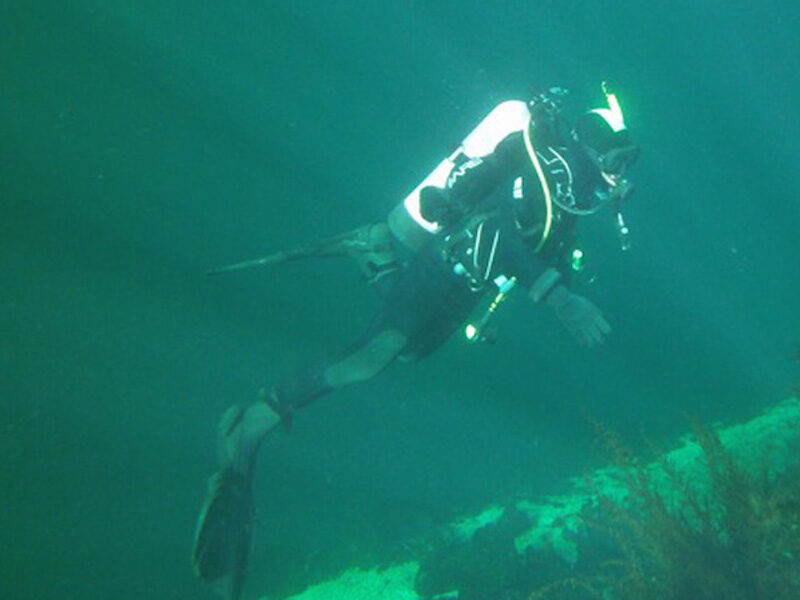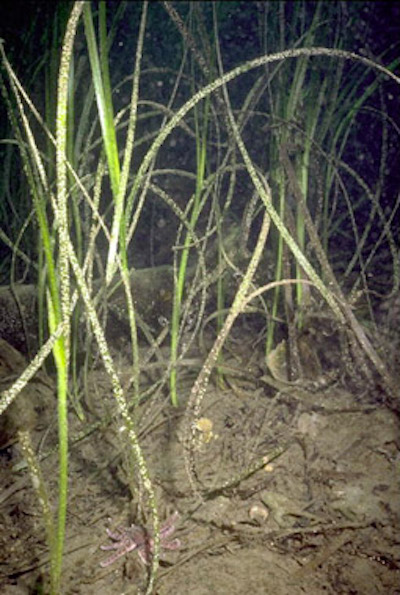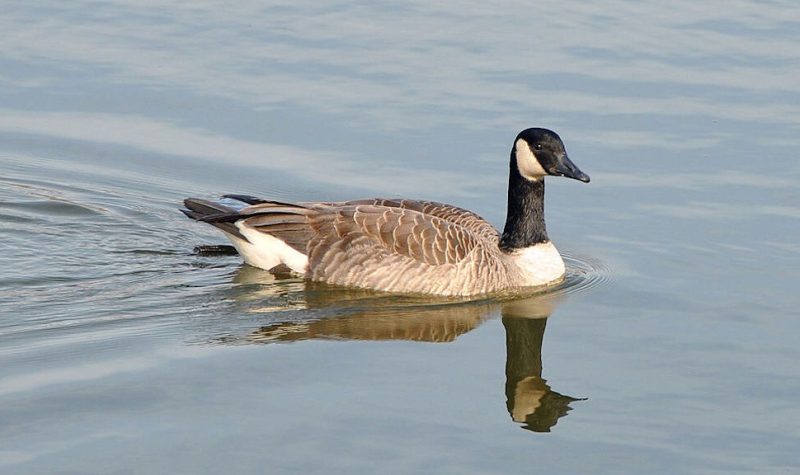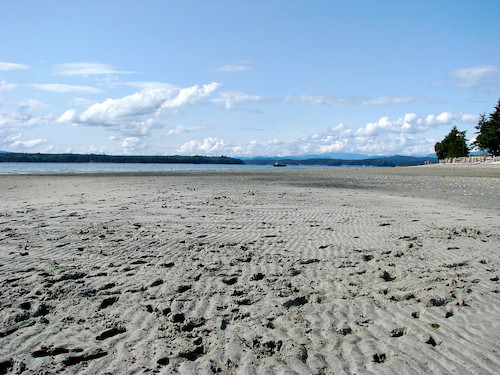By May Thaysen
Today on CKTZ, we'll hear a first-hand account of a concerning hunting episode on Oct. 24 in Smelt Bay, Cortes Island. We’ll hear from Conservation Officer Brad Adams, a local authority on the laws around hunting. And then we’ll take a deeper dive with Sabina Leader Mense into the some ecological considerations of hunting around Cortes.
Cortes Currents learned of the reports on a local Facebook page, We Heart Cortes Island, that described a scary situation. Kim Lotnick tells the story on social media.
Lotnick was walking on the beach with her dog. The weather was stormy and the seas were rough. She saw someone canoeing and thought that it was weird that someone would be out on the water.
Through her large headphones, she heard a loud blast like a gunshot. She turned to look and saw a flock of birds flying away from the canoe, and something flopping in the water that looked like a seal.
She would later learn that another witness to the scene saw that it was a goose.
Lotnick began filming and the person in the canoe was watching her as something was pulled into the boat.
In the Facebook post, Lotnick describes feeling terrified and many terrible thoughts flashed through her mind about what revenge the hunter might take on her for filming his actions.
The canoe followed her as she hurried to her vehicle.
She says the hunter was probably just heading in the same direction, and might have spoken to her, to discuss the situation. But she was not going to stick around to find out. At the time, she felt like she was being chased.
Is hunting legal right now?
According to Lotnick, she called 911 and was transferred to the Quadra RCMP. They told her that seal hunting was out of their jurisdiction, and suggested she call the Department of Fisheries and Oceans. Lotnick said she understood that illegal hunting would be out of RCMP jurisdiction, but would expect them to express more interest in shots fired at Smelt Bay.
Safely at home, Lotnick sought support from friends and from the Cortes Island Facebook group "We Heart Cortes Island." Another person replied to Lotnick's post about the situation, saying that another witness had seen that it was a goose that was shot. And another respondent informed the group that it was goose season and if properly licensed, the hunt was probably legal.
Lotnick says that she did feel a little better knowing that the hunt may have been legal, but it still made her feel, “totally uncomfortable."
A final word and request from Lotnick:
She said that feeding oneself is fine, but she would simply like to have some warning, and suggests there be a signal or a sign of hunts in progress.
Open hunting season on geese
To get some clarity on the laws around hunting, we contacted the Conservation Officer for the North Island Region, Brad Adams.
Adams informs us that in Management Area 1 (the local area), there is an open hunting season that includes "quite an assortment" — Canada geese, ducks, coots, snipes, snow geese, ross geese. The season runs Oct. 3 to Jan. 22.
Adams says that regulations prohibit the discharge of a firearm within 100 m of a building. There are also some regulations about the legal proximity to roads (one has to be outside the road allowance, 15 m from the centre line and not shooting across the road). And some municipalities and regional districts have additional bylaws establishing no-shooting areas.
Cortes Currents contacted Aniko Nelson from the Strathcona Regional District (SRD) to ask about any hunting bylaws. The response Cortes Currents received reads:
“Please be advised that the Strathcona Regional District does not have any regulation in effect governing the discharge of firearms or hunting over Crown or private lands jurisdiction…”
Adams tells us that bylaw infractions and serious safety violations would likely involve RCMP as well as the Conservation Officer Service. And, ultimately, regardless of the law, hunters are responsible for where their shots land.
Legal vs. ethical
Adams highlights an important distinction during the hunting season.
“There’s some things that are illegal, yes, but there’s other things that are unethical," he said.
Adams cautions hunters who would hunt in areas that are frequented by humans to ask themselves, “do you really want to cause conflict?”
"Everybody’s ethics are always different," he added.
In response to hearing a bit of Lotnick's story, Adams says if it was not in a restricted area, it was out of the roadway, it was on the ocean and the location was far enough from houses so “it could be a lawful hunt”.
CKTZ asked Adams to describe the dangerous range of shotguns used in waterfowl hunts. He says the effective range is 40-50 yards, but that shots could travel farther in some wind conditions.
“Those are where the considerations need to be taken by the hunter," he says.
Adams then spoke to the jurisdictional boundaries between the RCMP and Conservation Officer service. He said generally the conservation officers deal with unsafe hunting complaints, and RCMP will be engaged if the offence is deliberately dangerous or grossly negligent.
Adams clarified the legality of the canoe in this particular hunt. He said that hunting from any boat is legal but not while while under way or under power. Canoes can be travelling while hunting, if they are powered by muscle alone.
And, finally, we asked Adams how much shooting direction can be relied upon to establish a safe hunt. He said that hunters do need to be sure of their target and beyond and know their area.
“That’s the safest, that’s the best place for them to be shooting. Going outside of that, is going to cause safety concerns," he said.
An ecological perspective

Sabina Leader Mense diving in Cortes waters. Photo courtesy Friends of Cortes Island.
For a different perspective from which to consider this matter, Cortes Currents caught up biologist and ecologist, Sabina Leader Mense.
Lately, Mense has been coordinating a subtidal dive survey project, and for around seven years she has led wildlife coexistence education program. And for around 25 years, she has organized a team of volunteers to monitor the health of eelgrass around Cortes in a Foreshore Monitoring program. She also provides education around and evaluation of conservation projects various public and private landowners.
Mense told CKTZ that there are actually two varieties of Canada Geese living in Coastal BC — resident and migratory. The migratory geese pass through in the spring and fall, and the residents are here year-round.
The resident geese are not native to the coast, Mense asserts. They were introduced in the 1970s purportedly for the purposes of wildlife viewing and hunting. With plenty of urban, suburban and rural lawns created, and agricultural lands, the geese populations have “exploded” and become a nuisance.

Eel grass by Ronald C. Phillips PhD. via Wikipedia (CC BY SA, 3.0 License)
An ecological menace
But beyond being a nuisance, Mense says they are an ecological menace. Resident geese in large numbers feed on eelgrass beds.
Eel grass is a sea-grass that is common on the coast in shallow, sandy and muddy waters. It is a richly biodiverse habitat that is critical for many species, including salmon.
Mense describes observations in Manson’s Lagoon and Whaletown Bay wherein there was eelgrass, then there were geese feeding on eelgrass, and then there was no longer eel grass.
Mense says that there are efforts to reduce their numbers by addling eggs and relocating geese. Addling is the process of shaking the egg to kill the fetus, without breaking the shell. This tricks the goose into thinking they still has young to hatch and she won’t re-lay any eggs.
Mense added that the geese nest on small islets all over the coast, having a big impact on this rare habitat which supports many species at risk.
Mense says that the goose is good eating and hunting should be promoted to decrease their numbers. The goose abundance offers us an opportunity to put food on the dinner table, re-learn our connection to our ecosystems and restore imbalances made by others.
Links of interest
A final word from Adams:
Hunters and the rest of the public can always reach out with questions or concerns to the Conservation Officer Service — that’s what they’re there for.
To report an incident of concern, or for more information, call the RAPP hotline (report all poachers and polluters): 1-877-952-RAPP (7277)
Many thanks to Kim Lotnick and Officer Adams and Sabina Leader Mense for sharing their stories this week.
Many thanks to Theojt for the theme music this week. It was made available under a creative commons 0 licence.



